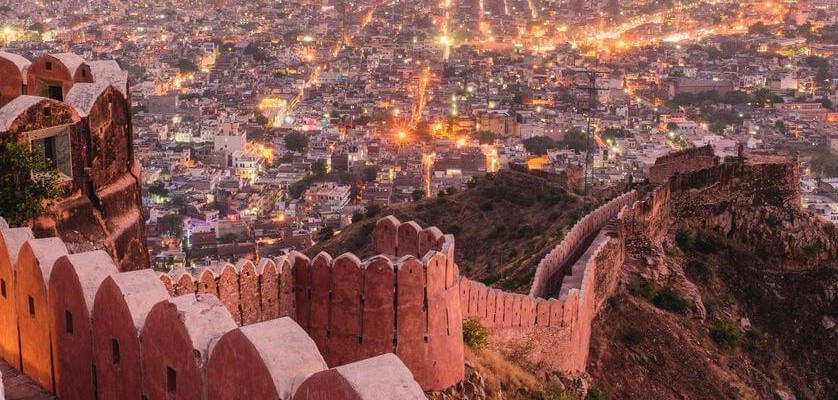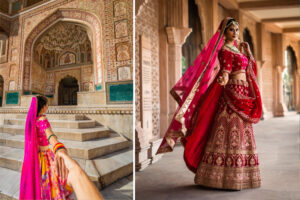Jaipur is mainly known as the Pink City of Rajasthan, and it is not just pink. Still, it is also India's most colorful city. The city is a mash-up of Indian culture and contemporary experiences. Jaipur was most likely India's first planned city. It was intended to be designed in pink, as this is welcome color. Tourists and locals alike are famed for their never-ending experiences in the city.

Lay tourists, culture vultures, literary artists, history lovers, architecture enthusiasts, and art and photography connoisseurs flock to the city. Its endearing 'pinkness' is a sensory and aesthetic treat. Visitors from all over the world have engraved particular odes to Jaipur's grandeur in their travelogues. Poets have composed inspired poems in response to its magnificent beauty.
In addition to being the state's capital, Jaipur is also the state's largest metropolis. The famous warrior and astronomer Maharaja Sawai Jai Singh II are credited with founding the city in the eighteenth century. The city's illustrious past comes to life in the palaces and forts where the royal clans once resided. Jaipur is a popular tourist destination because of its towering forts and Havelis, stunning temples, calm landscapes, and rich cultural heritage.
History:
In this context, there are several theories. So far, the most popular one has its roots in colonial rule. In the year 1876, Prince Albert was scheduled to travel to India. In his amazing spirit of hospitality, Maharaja Sawai Ram Singh II, the king of Jaipur at the time, had the entire city painted pink terracotta in honor of the royal visitor. Pink was once thought to be the color of hospitality. Since then, all structures and residences have been mandated to be painted pink. In some areas, the law is still being followed. According to historical traditions, the city was originally painted white before tinted pink.
When you arrive in Jaipur, you will see that most of the buildings have walls painted in a "pink" terracotta tint. The color is reminiscent of the city's history and culture. Going back in time, when Maharaja Sawai Ram Singh was in power and when Prince Albert visited Jaipur in 1876 as part of his India trip. The Maharaja wanted to impress the Prince, so he devised a bold tactic.
The Maharaja built a big music hall, which he called after the Prince Albert Hall Museum. Then he wanted to repaint the entire city to make it more attractive, and he chose terracotta pink to do it. In all weather situations, the color remained vibrant.
Another point to consider about the name:
It also makes sense because, during Prince Albert's lengthy tour to India, many Indian monarchs, including the rulers of Alwar, Benaras, Mysore, and Jodhpur, lavished him with expensive presents and tried to display their hospitality to him. The moniker 'Pink City' is said to have originated when the Prince visited Jaipur and admired the city's lovely pink appearance.
Many of the city's wonders are made of red sandstone. As a result, it could just be a coincidence that the Maharaja felt it would be a good idea to paint the town pink when the Prince was about to come, rather than giving it a more consistent and visually appealing look.
Things to do in Jaipur include the following:
Hawa Mahal (Palace of the Winds):
Maharaja SawaiPratap Singh erected the Hawa Mahal in 1799, a magnificent combination of Rajput and Mughal architecture. The Hawa Mahal was constructed so that the royal women could enjoy festivals and gatherings. It is constructed of lovely pink and red sandstone. The tower is designed so that royal women can enjoy the city vista and life without being seen by the general public. It is shaped like Lord Krishna's crown and features 953 jharokhas, or windows, in a five-story tower. As a result, it is a must-see attraction in the pink city.
Jal Mahal is a palace:
Jal Mahal, as the name suggests, is Jaipur's water palace. Its tropical architectural style, which combines Rajput and Mughal architecture, is quite breathtaking. It was designed for the royal family to use as a summer entrance amid Man Sagar Lake. It is better to visit Jal Mahal when it is raining since it appears surreal and gorgeous against the backdrop of the night sky.
Fort Nahargarh:
The fort of Nahargarh is a stunning example of a unique blend of Indian and European architectural styles. The MadhavendraBhawan had 12 similar suites for queens, which was an unusual feature of this fort. It was built so that the Maharaja could visit any queen's suite, and none of the other queens would notice. The fort's roof contains a restaurant, a lovely spot to enjoy a cold drink while admiring the city view from the top.
Chokhi Dhani:
Chokhi Dhani is the destination to visit if you want to learn about the Rajasthani culture. It features the vibrant ambiance of a Rajasthani hamlet where guests may enjoy real Rajasthani food while watching a magic show, puppet show, folk performances, camel rides, elephant rides, and other activities. Chokhi Dhani is a welcome respite from the hustle and bustle of daily life.
Jantar Mantar:
JantarMantar in Jaipur houses the world's largest stone sundial, built by the scholar Sawai Jai Singh in the 18th century. This site is also designated as a UNESCO World Heritage Site. The principles of light and shadow represent time in this observatory building. JantarMantar can predict the positions of the major stars and eclipses and indicate the time. This is a renowned tourist destination in Jaipur.
Raj Mandir
Raj Mandir, which opened its doors in 1976, is a well-known movie theatre in Jaipur. W.W. Namjoshi, a well-known Indian architect, created this theatre auditorium. Over the years, this location has hosted film premieres. The stunning interiors guarantee that seeing a film here will be a memorable experience. The winding staircases and antique chandeliers suspended from the ceiling provide a traditional touch to the overall experience.
With these fantastic activities and things to do in Jaipur, your trip will be one to remember. If time is not an issue, make the most of your Jaipur vacation by participating in the activities mentioned above. Jaipur's appeal in all its colors of pink will enchant you, from forts to palaces, streets to festivals. Because of its legacy, beauty, and architecture, this city should be at the top of your trip wish list.
Jaipur's best hotels include:
Why not live like a royal when visiting Jaipur? Yes, this is possible with the city's different historic hotels. Royal architecture, courtyards, royal structures, and green gardens provide a unique opportunity to learn about history and royalty. Staying in the pink city's heritage hotels will satisfy the monarch within you.












